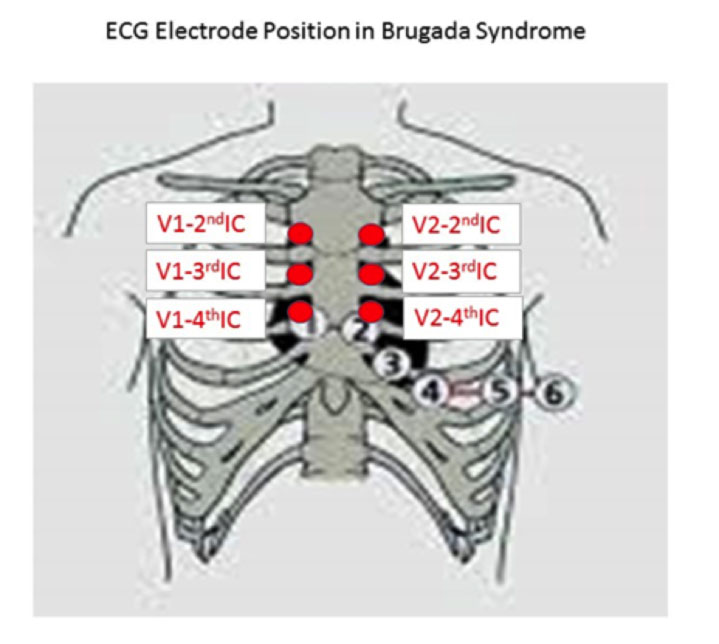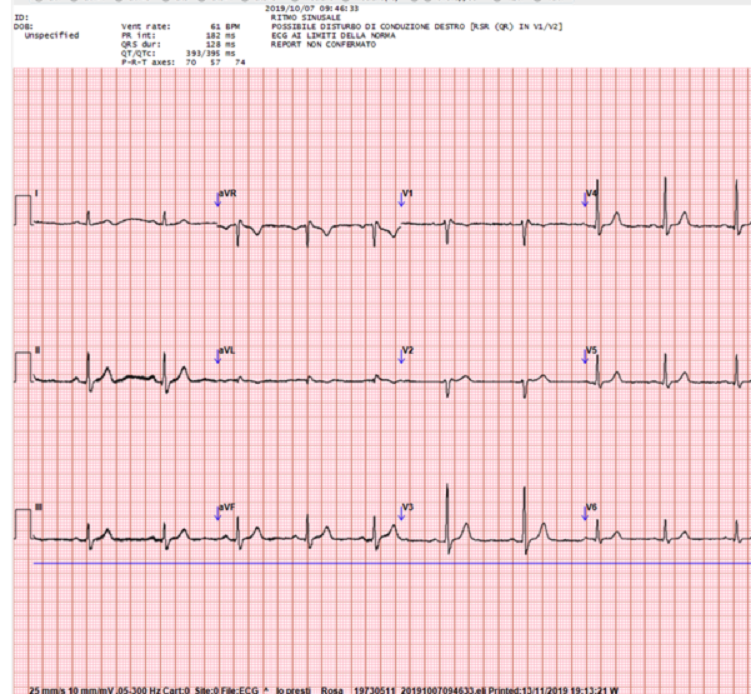ECG 12 Derivations
What is the standard 12-lead electrocardiogram?
The standard 12-lead electrocardiogram (ECG) is the most frequently used diagnostic test in cardiology practice, which enables the electrical activity of the heart to be recorded and displayed graphically. The ECG can be performed either at rest, while the patient is lying on the couch, or during exertion, while the patient walks on a treadmill or rides on an exercise bike.
For what is the 12-lead electrocardiogram used?
The electrocardiogram at rest enables the measurement of the frequency and rhythm of the heart, as well as some parameters of heart muscle function. In particular, the ECG enables the detection of possible cardiac rhythm disorders (called cardiac arrhythmias). The ECG also makes it possible to detect any disturbances in cardiac muscle spraying (myocardial ischemia) or changes in the size of the heart chambers (for example myocardial hypertrophy). On the other hand, the electrocardiogram under stress can help in the diagnosis of latent heart disease.
What are the preparation rules and the risks of the 12-lead ECG?
The electrocardiogram procedure does not require any preparation. There are no contraindications for performing the standard electrocardiogram. The exam is safe and painless, and can be performed at any age, even in the newborn, and repeated whenever necessary. The only collaboration required of the patient is to remain still and relaxed at the time of the execution of the exam.
How does the 12-lead electrocardiogram work?
The ECG is performed by applying to the chest skin some electrodes (which can be adhesive or simple to contact), connected through electric wires to a device called an electrocardiograph. The electrodes and wires capture the electrical activity of the heart and transmit it to the electrocardiograph, which processes the cardiac signals and prints the signals on paper in the form of a graphic trace called the “electrocardiogram”.
To evaluate the activity of the heart in a three-dimensional way, in order to better localize the origin of the anomalies in certain parts of the heart, 12 derivations are recorded simultaneously, each of which preferentially explores a specific cardiac region. The derivations are divided into precordials (directly detected by the electrodes placed on the chest, in the area facing the heart) and peripherals, for which the signals are recorded starting from the limbs.
In our center, all the electrocardiographic traces are acquired through new generation electrocardiographs (Mortara Instruments Europe, Italy, Eli 350 or Eli 380 systems), which acquire and archive all the traces in digital form in a centralized archive, in order to make subsequent comparisons or processing with new specialized programs.
How should the electrodes be positioned to highlight the Brugada pattern in the 12-lead electrocardiogram?
In the case of suspicion of Brugada Syndrome, to identify the possible presence of spontaneous Brugada type 1 patterns, it may be necessary to place the precordial derivations in the so-called high precordial derivations, or in the 2nd and 3rd intercostal space instead of in the classical 4th intercostal space.
In the case of the Brugada pattern, sometimes the typical ECG alteration in the right precordial derivations is absent or barely mentioned (called pattern type 2 or 3), but appears or becomes accentuated if the exploring electrodes are placed one or two intercostal spaces higher. This happens because the phenomenon of Brugada, in basal conditions, occurs in a very limited portion of the right ventricular region, whose potentials are detected only if the electrodes are placed practically above the region concerned.

What are the bureaucratic procedures for implementing the standard 12-lead ECG?
The 12-lead ECG is generally performed in conjunction with the arrhythmological examination or when checking implanted cardiac devices.
The test can be carried out in agreement with the national health system (SSN). It must be requested by your general practitioner or referral specialist with the wording “dynamic Holter electrocardiogram”, with the indication of the clinical question.
The test can be performed privately. In this case, it is not mandatory to be in possession of the medical prescription of a specialist.
Remember to always bring the previous health records
If you need to book an ECG 12 leads -> Request information and / or Exam


